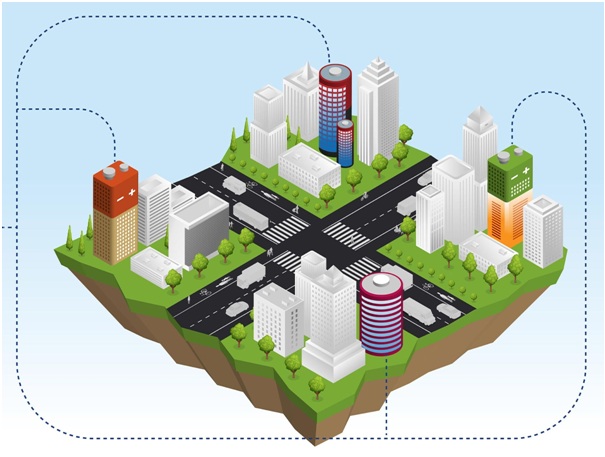There has been research going on how to use concrete buildings, into giant batteries. The idea has been gaining ground as we have come to increasingly rely on renewable energy from the wind and sun. Experimental concrete batteries have only managed to hold a fraction of what a traditional battery does. But one team now reports in Buildings that it has developed a rechargeable prototype that could represent a more than 900 percent increase in stored charge, compared with earlier attempts.
New research from Chalmers University of Technology in Sweden shows that with minor tweaks, the concrete used to build many of the world’s buildings and infrastructure projects can be turned into a rechargeable battery. This can be done by embedding a typical concrete mix with short carbon fibers, an iron-coated mesh of carbon fiber, and another mesh coated in nickel, the concrete can be made to conduct and store small amounts of electricity. This can be incorporated at the scale of an apartment building, bridge, or citywide sidewalk network; the energy storage capacity could add up to provide a modest but potentially renewable source of electricity.
The function of the rechargeable concrete battery
The rechargeable concrete battery is developed by Luping Tang, a professor in the department of architecture and civil engineering at Chalmers University, and Emma Zhang, now a senior development scientist at the engineering and technology company Delta of Sweden. They mimicked the design of simple but long-lasting Edison batteries, in which an electrolyte solution carries ions between positively charged nickel plates and negatively charged iron ones, creating an electrical potential that produces voltage. Experimental concrete batteries have solely managed to carry a fraction of what a conventional battery does. But one crew now experiences in Buildings that it has developed a rechargeable prototype that might symbolize a greater than 900 p.c improvement in saved cost, in contrast with earlier attempts.
Tang and Zhang’s experiment, using two square slabs of concrete just a few inches wide, was able to generate enough of a charge to power a small LED light. That’s equivalent to an average energy density of 7 watt-hours of energy per square meter, or about enough to power a night-light for an hour. If that were scaled up to a hypothetical eight-story apartment building with about 17,000 square feet worth of concrete slab floors, the building would be able to store about 11 kilowatt-hours of energy, or about the energy required to use a 75-watt light bulb four hours every night for a month.
An entire building’s worth of concrete to power a light bulb may not seem so impressive, but researchers think beyond that single building to all the concrete structures around the world. “If we take the annual quantity of concrete, it’s about 9 million tons of concrete produced per year,” the researcher says. If we used all the concrete produced per year to produce concrete batteries, about 3 billion kilowatt-hours of energy could be stored.
Way forward
The researcher believes it is a tangible step toward turning the world’s most used building material and one of its most environmentally costly to store much-needed electricity. When coupled with solar panels to generate electricity, concrete batteries could be a way to chip away at the environmental impact of a material that seems likely to remain a key part of the way the world builds.The concept needs to be further developed and the electricity storage capacity of concrete needs to be increased.
Cover image- scitechdaily.com


